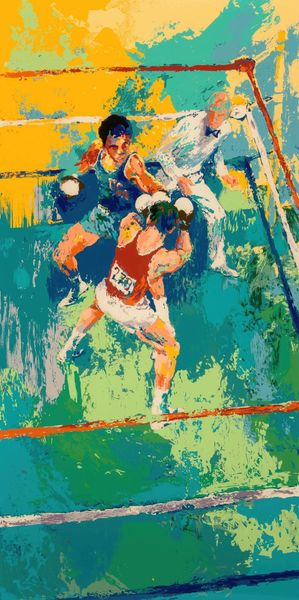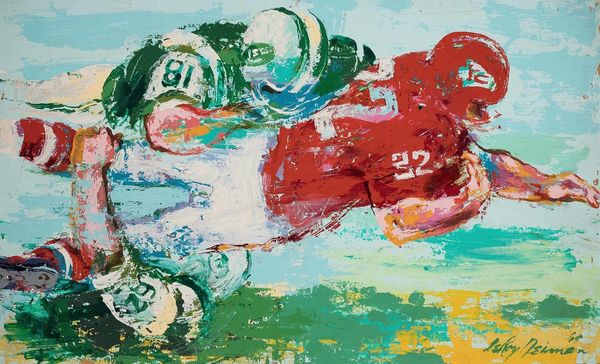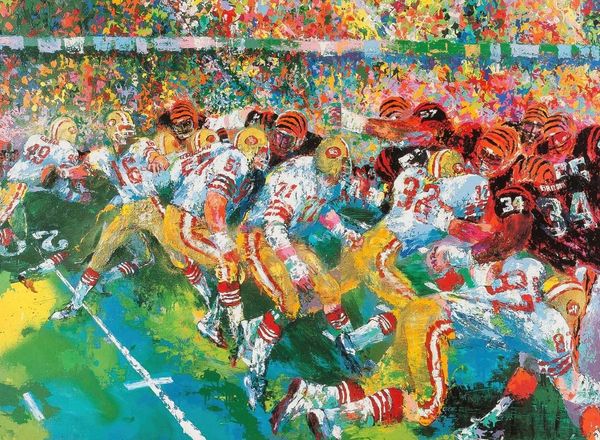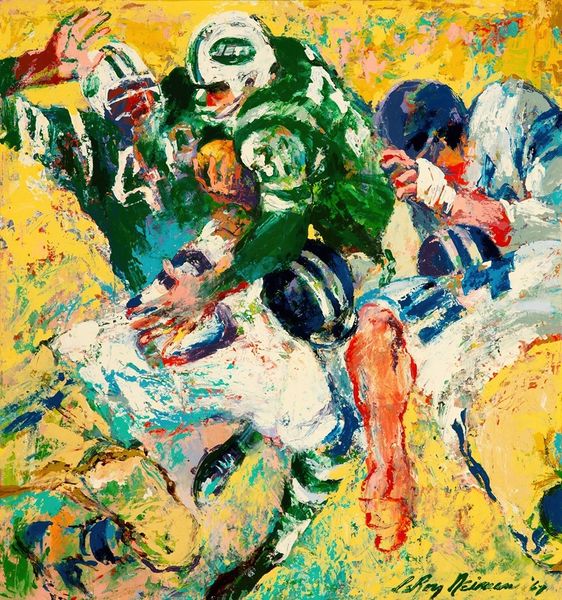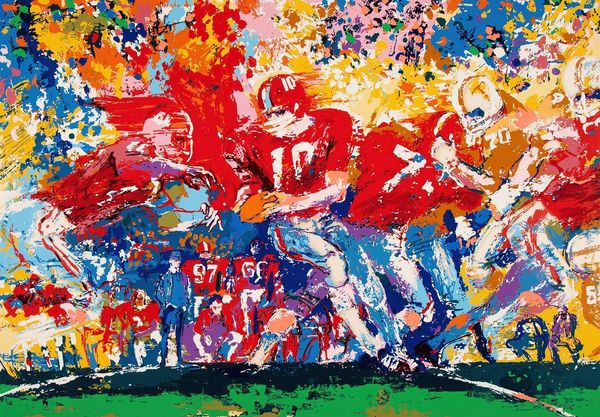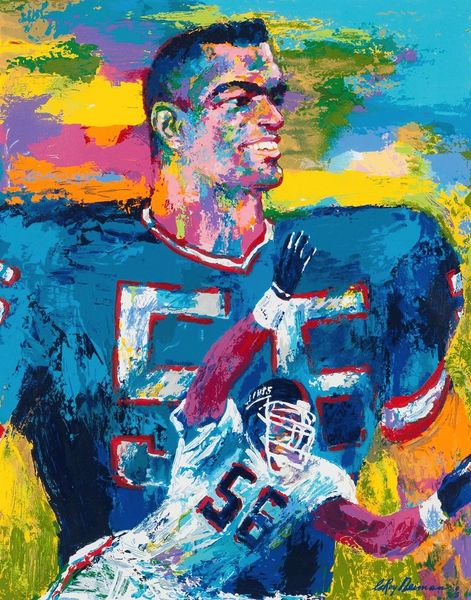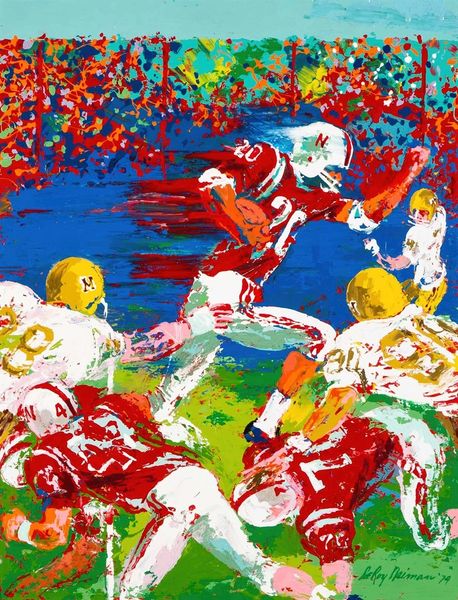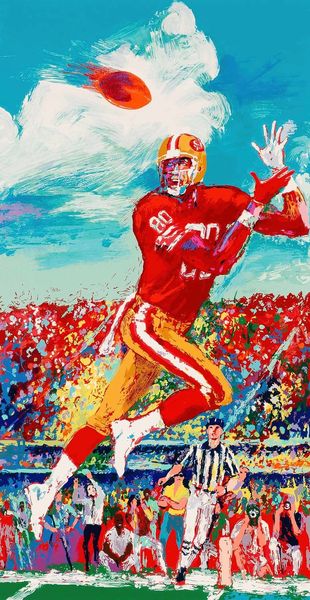
Copyright: Modern Artists: Artvee
Curator: This striking painting is titled "Randy Rasmussen" by LeRoy Neiman, created around 1970 using acrylic paint, notably applied with an impasto technique. Editor: Immediately, I'm drawn to the energy in this piece. It’s raw and visceral, almost aggressively vibrant. You can practically feel the impact of the sport. Curator: Indeed. Neiman's sports portraits are quite characteristic, full of energetic gestures. Rasmussen was an offensive linesman for the Philadelphia Eagles. In Neiman’s work, the athletes are transformed into near mythical figures, embodiments of force and athleticism. Notice how the symbolic color choices intensify the impact of this image, recalling Fauvist or Expressionist painting styles. Editor: It’s fascinating how the impasto technique lends itself so well to the subject matter. The thick paint mimics the muscularity of the figure, almost as if the paint itself is straining. I'm also curious about the social context. Was Neiman aiming to elevate working-class athletes to a level of celebrity status? Curator: It’s possible. In this instance the cultural context cannot be ignored. American football has long held a central position within US sports culture, a representation of both individual prowess and teamwork, particularly with respect to figures like the offensive lineman whose job centers on the performance of other teammates. This painting functions almost like an icon celebrating American athletic ideals. Editor: And look at the labor that went into this, the physical act of applying paint in such a vigorous way. It's a far cry from the smooth surfaces we often associate with "high art". It's also important to consider the materials themselves; the widespread availability and relative affordability of acrylics allowed for such a bold, expressive approach. This likely made such dynamic, figurative work more accessible to both artists and collectors. Curator: I hadn't considered the aspect of material access shaping the aesthetic in such a direct way. It certainly shifts how we understand Neiman’s overall body of work in relation to similar sporting imagery from art history. Editor: This really forces you to question those artificial boundaries between craft and fine art, and also sheds light on how an artist can transform seemingly commonplace activities into images of power. Curator: It offers a potent image of athletic endeavor elevated to the symbolic plane, while considering also the practicalities involved in realizing its visceral aesthetic.
Comments
No comments
Be the first to comment and join the conversation on the ultimate creative platform.


